The third stage of Margaret Karram and Jesús Morán’s journey to Asia and Oceania was to Fiji. The spirituality of unity began to spread in this part of the Pacific at the end of the 1960s.
The Focolare in the Pacific, one family
Although Margaret Karram and Jesús Morán arrived in Fiji on 3rd May, the official start of the stage of their journey in Oceania took place two days later, with the “Sevusevu” ceremony. Over 200 people attended, including representatives of the local Church. The ceremony sealed their entry, and the delegation from the Centre accompanying them, into the Fijian community, both ecclesial and social.
Sevusevu: the gift of welcome
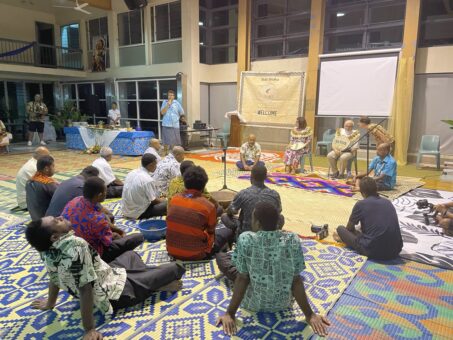
Those arriving in the archipelago are welcomed with the ceremony of ‘Sevusevu’ – meaning ‘gift’. And from that moment on they are no longer visitors, but part of the community and members, with all the rights and privileges of being on Fijian soil. The President and Co-President of the Focolare received precious garlands and the Kava root, derived from the pepper plant, which has ancestral significance. The two ‘candidates’ were presented to the community by ‘heralds’, who spoke on their behalf. They then drank the drink made from Kava in one go and received the ‘Tabua’, a whale tooth which has sacred meaning: it is the most precious object in Fijian culture, and it was offered to them as a sign of the highest esteem and honour.
Traditions in the Pacific: where the present and future of peoples are rooted
Right from the start, we realised that, in the Pacific, traditions feature in a significant and living way, which is relevant for today They are not relegated to a past that has nothing to do with people’s daily lives but form the foundation of their way of life. Among the values that traditions continue to hand on are respect, welcome, reciprocity, social solidarity, and a very deep and longstanding bond with nature.
“Margaret Karram, Jesús Morán and the Focolare delegation have arrived at a particular time in the life of the Fiji Islands,” explained Peter Emberson, a Fijian, engaged in multilateral consultancy and a political analyst for the government of Fiji and the United Nations, who has known the movement since he was a child. “The present government is more open and democratic, and I see Margaret and Jesús’ visit as part of this process of social and political renewal. There are two questions that here in the Pacific we always ask an official delegation that lands on the shores of our islands: ‘Where are you from?’ and ‘Why have you come?’ At the ‘Sevusevu’ Margaret stood before the Fijian people and offered her commitment and that of the Focolare Movement to build unity here too. It is an identity-making response, which says a lot about the contribution that the Movement can make to our country. And this builds trust”.
A region that is still too little known
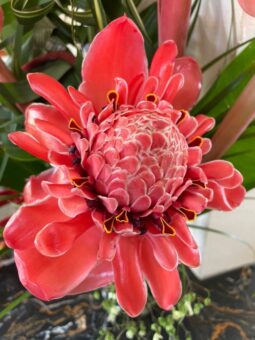
Oceania is a little-known continent and although, in a territorial sense, it is the largest on the globe, in terms of land mass it is the smallest. In addition to Australia and New Zealand, it includes the Pacific region, consisting of 26 nation states and territories. The main ethnic groups are Melanesians, Micronesians, and Polynesians. In total, the Pacific region has a population of 16 million people and in the last 100 years, the Fiji Islands (almost one million inhabitants), have become the political and economic heart of the region. There is a diverse religious landscape in which Christianity is the most practised faith, followed by Hinduism and Islam. Catholicism arrived in the 19th century and today Catholics number just over 82,000.
Father Soane Fotutata, secretary of the Episcopal Conference of the Pacific (CEPAC), during a dinner in the focolare, spoke about the challenges facing society and the Church in this vast territory, where the Catholic Church has 14 dioceses. He explained that the ecological crisis threatens the very existence of people and communities. It is seen in rising sea levels, acidifying oceans, droughts, floods, and extreme weather events that have become more frequent. Then there are social wounds such as economic and climate migration from many islands; prostitution, alcoholism, and poverty, to which the local Church is trying to respond.
2022: the arrival of the focolares in Suva
It was in this ecclesial context that the women’s and men’s focolares opened a year ago in Suva, the capital of Fiji. Their presence, in fact, is also linked to a project supported by Missio Scotland and Missio Australia, to collaborate in the diocesan pastoral care for young people preparing for confirmation and post confirmation with a programme that focuses on supporting the handing on of cultural riches between generations. Lourdes Rank, from Brazil, and Stephen Hall, from New Zealand explained: “On our arrival, the Archbishop asked us to be first of all at the service of the Church and to be part of its activities and projects. We got involved in catechesis, with young people and in the life of our parishes. This approach has been very positive: we are now truly part of the life of the Church and we have begun to build relationships with a number of priests, religious and lay people’.
In this regard, the vicar general of the Archdiocese of Suva, Mgr Sulio Turagakacivi, expressed his gratitude for the service that the focolares give in the local Church. Thanking him, Margaret said: “We can learn from the Church here how to live the synodal process and how to maintain the freshness of the encounter between the Gospel and the local society and culture“.
In Futuna the first seed of the spirituality of unity
The first seed of the spirituality of unity in the Pacific was planted in the island of Futuna in the late 1960s by Sr. Anna Scarpone, a Marist missionary. The first Pacific focolare was then based in Numea (New Caledonia) from 1992 to 2008, accompanying the growth of a vibrant local community. Today, the two focolares in Fiji are ‘home’ for all the Movement’s communities in the Pacific region, which, besides New Caledonia and Fiji, are in Kiribati, Wallis and Futuna, with some people who already know about the spirituality in Papua New Guinea, Samoa and Vanuatu.
Together for the first time
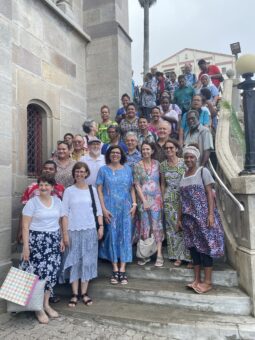
On the occasion of Margaret Karram and Jesús Morán’ visit, the communities met in Suva for a few days. It was their first meeting in one of the Pacific Islands. Many events and customs, such as welcoming and appreciating each other, showed the extent to which everyone realised how precious those days were.
For these peoples, coming together as a Focolare family does not only mean having a spiritual communion, but means contributing to daily life. This involves cooking, preparing the liturgy of the Mass, the songs and the dances – each one offering their specific human and cultural “gift” that is shared with that of the others.
Margaret and Jesús met with the men and women focolarini for a morning of deep sharing and were able to spend a lot of time experiencing different aspects of the life of the community, such as meals, Mass, with many opportunities just to talk together. The sharing of experiences gave them an insight into the challenges and commitment of the Movement in the Pacific. In New Caledonia, the community is engaged at the service of the Church and, on a social level, in creating opportunities to build up unity between the different ethnic groups on the island. In Futuna and Kiribati, the Word of Life is central, generating experiences of forgiveness and reconciliation in families and also establishing social projects at the service of women and the needy. In Fiji the community is growing and shares a commitment serving the Church together with the focolarini.
Run4Unity in Fiji: journeying together
The 6th of May was Run4Unity day, and Margaret Karram started the worldwide relay from the Pacific, where we see the world’s first sunrise. With the Teens for Unity, she and Jesús planted two trees typical of the Fiji Islands: “the native sandalwood tree and the citrus tree, which need each other to grow,” she explained. “The sandalwood has the fragrance and the citrus, provides it with all the nutrients it needs. It is a wonderful example of mutual care found in nature. This is what the Pacific Islanders want to say to all of us: the only way to give our precious gift, unity, is to journey together, taking care of each other. In this way we can transform our world’.
It is a message that highlights what is perhaps the main characteristic of these islands: living as a community. This emerged clearly in the afternoon and evening of 7th May at the meeting Margaret and Jesús Morán had with the community. “I have come here to be close to you and to share your life at least for a few days,” Margaret Karram told everyone. “What I have found here is very close to my heart and to the culture I come from, which encourages respect for other people and their language, and a sense of family. There are just a few of you, but do not worry: what matters is living the Gospel and bringing unity to those we meet. What you have shared with us during these days has impressed me greatly. Through your love, hospitality and welcome, you have given Jesus to us. But listening to you, I realised that the most precious pearl we possess is Jesus forsaken for whom we have left everything and who is the secret to loving everyone“.
Jesús Morán added: “The experiences of forgiveness that you have told us have touched me deeply, and they show that you are living the Gospel, because forgiveness is the greatest newness that the Gospel contains. Forgiveness is not something merely human, only Jesus in us can forgive, and you have shown us this with a unique clarity“.
When Margaret Karram was asked her hopes are for the future of the Movement in Oceania, she answered by saying what her hopes are for the whole Movement in the world: that it may become ever more a family, which is not closed in on itself, but is open to dialogue with all so as to fulfil the prayer of Jesus to the Father, which was Chiara Lubich’s dream.
At the end she added: “I would like to say that in order to contribute to achieving unity, each country, culture or continent must not lose its own identity. We must remain ourselves. This would be a great gift for the whole Movement and also for the world: to be ourselves, with our riches and our challenges, and to live the charism of unity without leaving aside what we are‘. The applause that followed showed everyone’s gratitude at feeling they were understood.
Having begun with the ‘Sevusevu’ ceremony, the visit could not but end with equal solemnity. The farewell ceremony, ‘I-Tatau’, seemed to close a circle. Heralds, speaking in Fijian on behalf of Margaret Karram and Jesús Morán, thanked the community and asked, on their behalf, permission to take their leave. The speaker representing the Fijian community granted them permission to leave and wished them a safe journey in the hope of seeing each other again.
The concert that the Pacific communities had prepared for that evening was an extraordinary ‘expo’ of the artistic talents of the peoples present, where dances and songs spoke of their deep connection with the earth and with nature, their pride in their traditions and the desire to share them.
But what will remain in everyone’s minds, we believe, were the greetings exchanged between the communities of New Caledonia and Fiji. Sitting opposite each other, they each sang their own farewell song, they waved goodbye to each other looking into each other’s eyes, as if they were leaving their own brothers and sisters.
The said to Margaret Karram: “We assure you that we will be one family and, even with our weaknesses, we will do all we can to keep Jesus in the midst in Oceania.
Stefania Tanesini


 Italiano
Italiano Español
Español Français
Français Português
Português
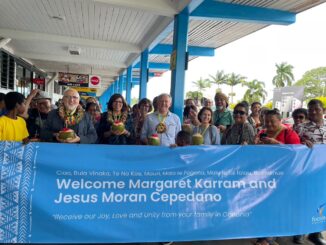
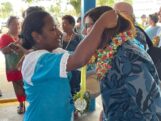
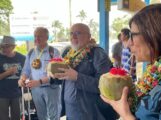
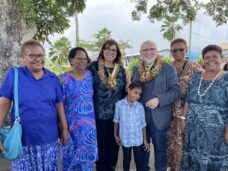
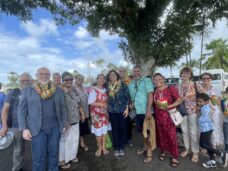
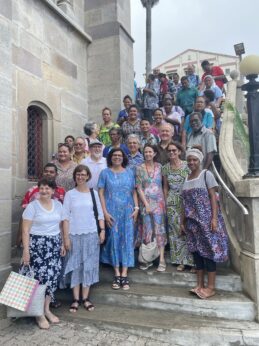
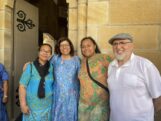
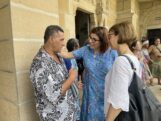
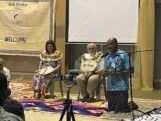
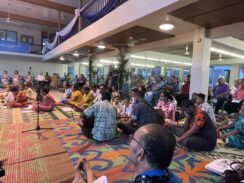
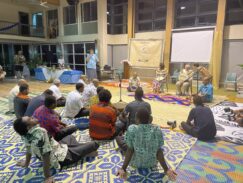
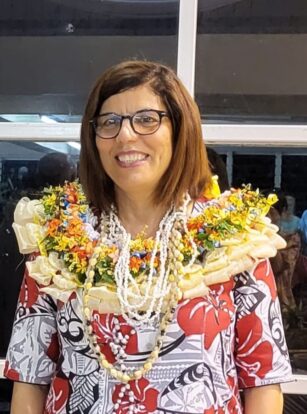
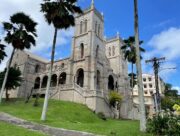
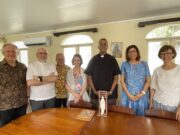
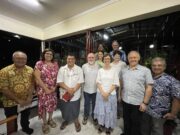
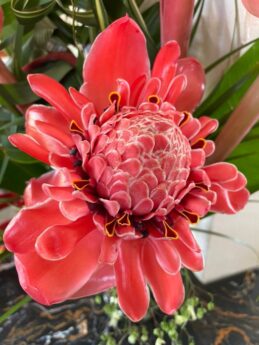
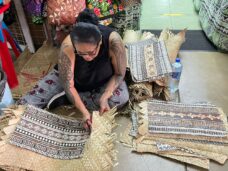
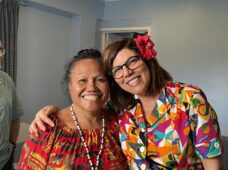
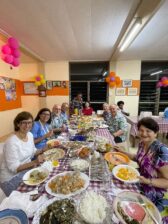
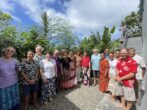
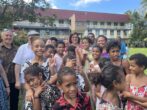
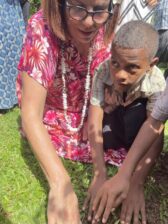
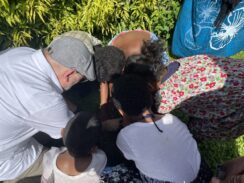
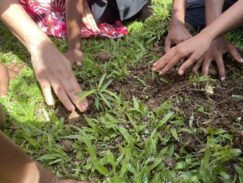

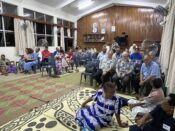
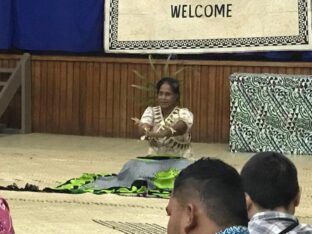
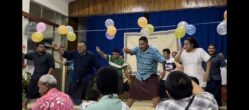
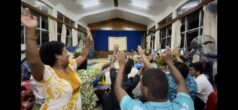
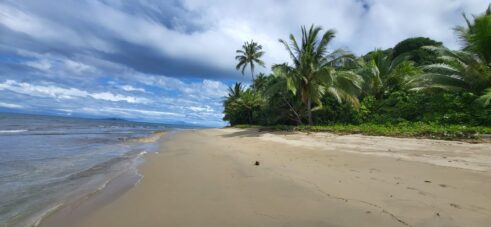


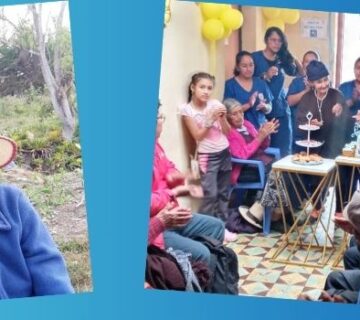

Dio prepara a cose meravigliose